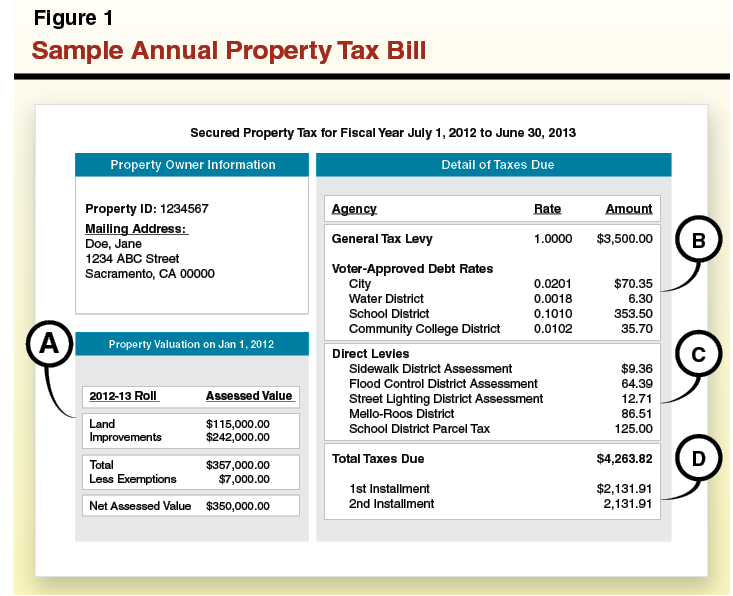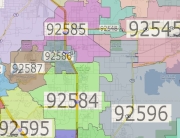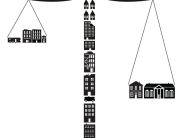A California property tax bill itemizes a few different taxes and charges.
Below is on property tax bill sample provided courtesy of the Legislative Analysts Office.
These tax levies include:
-
The Proposition 13 1% rate with limits established in 1978.
-
Taxes that go toward paying your local voter-approved debt .
-
Parcel taxes.
-
Mello-Roos taxes.
-
Property value assessments.

The California Constitution sets forth a method to determine a property’s taxable value in order to calculate tax levies from the Prop 13 1% rate in addition to voter-approved debt.
The sample provided above shows a property tax bill where Box A indicates the taxable value of the real estate.Box Bholds the tax levies that are calculated based on this property value. Levies founded on value, such as the Prop 13 1% rate and voter-approved debt rate, are called “ad valorem” taxes.
The California Constitution states that additional property tax charges on the bill (Box C) cannot be set based on the property’s taxable value. They are rather based on other data, for instance, the monetary benefit the property owner gains from home improvements.
Box D shows that the total due amount on most California property tax bills is divided in two. The first property tax bill payment is due by December 10. The second property tax bill payment is due by April 10.
If you have further questions about your property tax bill or a possible property tax refund, you should contact a property tax professional. A property tax pro will be able to advise you on the current value of your real estate property as well as the chances of a property tax appeal and possible refund. You will also be able to answer your questions about proposition 13 and proposition 8 and how they effect your property tax rate.













